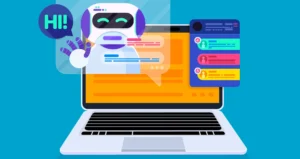Unveiling Advanced Audio Models in the API

Next-Generation Audio Models in OpenAI’s API
Advancements in audio technology have gathered significant momentum, particularly in the realm of artificial intelligence. OpenAI, a pioneer in AI research, has recently announced the introduction of its new generation of audio models in its API, offering developers unprecedented capabilities to innovate and enhance user experiences.
What Are Audio Models?
Audio models are sophisticated systems designed to process, analyze, and generate audio data. They utilize machine learning techniques to reproduce or modify sounds, making them invaluable in fields such as music production, virtual assistants, customer service, and gaming.
Key Features of Next-Generation Audio Models
OpenAI’s latest audio models come packed with numerous features aimed at elevating audio technology. Here are some of the standout attributes:
Enhanced Sound Quality
- Improved fidelity and clarity in audio output
- Ability to capture nuanced sounds and conversations
Versatile Language Support
- Supports multiple languages, making the technology accessible globally
- Seamless integration of various dialects and accents
Real-Time Processing
- Capable of processing audio in real time, ideal for live applications
- Quick response times enhance interactivity in user-oriented applications
Customizable Models
- Users can fine-tune the models to meet specific needs
- Flexibility allows for a broader range of uses, from chatbots to content creation
- User-Friendly API
- Simplified interface designed for easy integration into applications
- Comprehensive documentation and support for developers
Applications of Next-Generation Audio Models
The applications of these audio models are vast and varied, touching multiple sectors:
1. Healthcare
- Virtual health assistants can provide audio-based patient interactions.
- Doctors can use audio models for voice recognition and dictation of notes.
2. Entertainment
- Content creators can leverage these models for generating music or voiceovers.
- Video games can enhance immersive experiences with dynamic audio generation.
3. Customer Support
- Automated voice systems can manage customer inquiries effectively.
- Improved sentiment analysis through audio processing can lead to better customer interactions.
4. Education
- Provides real-time transcriptions and translations for diverse learning environments.
- Supports language learning through voice recognition and feedback.
5. Accessibility
- Assists individuals with disabilities by converting text to speech.
- Offers customized solutions for various needs, enhancing usability.
How to Get Started with OpenAI’s Audio API
To leverage the power of OpenAI’s next-generation audio models, developers can follow these steps:
Step 1: Create an OpenAI Account
- Sign up on the OpenAI website to access the API.
Step 2: Explore Documentation
- Familiarize yourself with the API guidelines, capabilities, and limitations.
Step 3: Test the API
- Utilize pre-built examples to understand the API’s functionalities better.
- Experiment with audio generation and processing for practical applications.
Step 4: Build Your Application
- Start incorporating the audio models into your application based on your specific use case.
- Adjust settings and configurations to match your objectives.
Step 5: Seek Support
- Utilize OpenAI’s community forums and support channels for any challenges faced during implementation.
Final Thoughts
OpenAI’s next-generation audio models represent a remarkable step forward in audio technology. With high-quality sound output, real-time processing capabilities, and user-friendly integrations, these innovations present immense opportunities across various sectors. The potential applications are almost limitless, paving the way for more interactive, accessible, and engaging experiences in audio.






